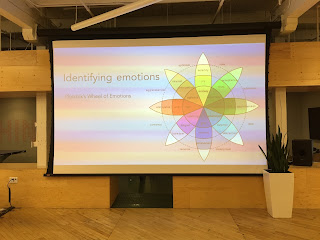“Everything is personal”, Mo started his presentation by saying that. He was supposed to talk about Leadership, Empathy, and role of one in the other.
It’s always personal. It’s always has been, even business! #TeamLeadTO pic.twitter.com/13xMvLQ5At— Shahin Sheidaei (@sheidaei) September 5, 2017
He took us through several exercises that gave us insights into empathy. He debriefed each exercise by asking the question similar to “What would you think the other person was thinking about?”. This is Mo‘s presentation.
These are the summary, instructions, and debrief of exercises he facilitated.
- First Exercise
- Handshake
- 30 seconds to stare at each other
- Second Exercise
- Tell me the truth
- Hypothesis question, what the other person feeling?
- Third Exercise
- Tell me about a time you scared/failed
- That reminds me of the time…
- It’s not about the stories but the sharing of feelings
 |
| Figure 1 – Listening without Bias |
As part of being a good leader, you need to listen. The above pictures show anti-patterns of listening actively, or as he put it mindfully listening (v.s. radically listening). It is a good rule of thumb for you to be self-aware.
 |
| Figure 2 – Wheel of Emotions |
Working on your empathy, one can think of different emotions. When you become angry, ask yourself am I angry? or am I annoyed? or am I disturbed? Try this with other emotions as well. This helps you immensely in developing your empathy. You won’t be able to empathize with other people if you don’t know what exactly they are feeling.
This slide reminded me of my blog post about “How to Use Check-In Protocol to Incorporate Feelings in a Retrospective“. I relied on different names of colors to convey the message that we need to work on our communication and be aware of it as well.
This great presentation was sponsored by Shopify and was hosted at the #TeamLeadTO group. By the end of the meetup, you could see empathy is way more personal that you thought of. You need to work very hard on it if you want to be a good leader. The exercises helped us a lot to have a conversation about not our feelings but what we believe the others are feeling, and practice our empathy toolkit!